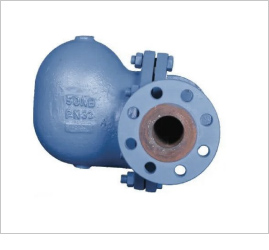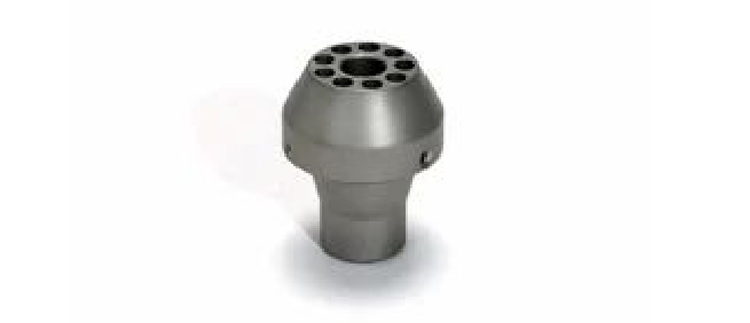
Ball Float Traps

Thermodynamic Traps
Description
Steam traps are essential components in steam systems used to remove condensate (liquid water) and non-condensable gases from the steam lines, ensuring efficient and reliable operation. They play a crucial role in maintaining the quality and integrity of the steam while preventing energy loss and potential damage to equipment.
Here are the key features and functions of steam traps :
1. Condensate Removal : Steam traps are primarily designed to discharge condensate, which forms when steam loses heat and converts back into liquid water. Accumulation of condensate in steam lines can lead to reduced heat transfer efficiency, water hammer, and corrosion.
2. Automatic Operation : Steam traps are self-acting devices that operate without the need for external control. They open to discharge condensate and close to prevent the loss of steam.
3. Condensate Discharge Types : There are several types of steam traps, each employing different mechanisms to remove condensate. The most common types include:
a. Float-Type Steam Traps : These traps use a float mechanism that rises and falls with the condensate level. When the condensate reaches a certain level, the float opens the trap to discharge the condensate.
b. Thermodynamic Steam Traps : Thermodynamic traps utilize the principle of fluid dynamics to open and close the trap. They have a disc or valve that opens when the pressure differential exceeds a specific threshold, allowing condensate to be discharged.
c. Bimetallic Steam Traps : Bimetallic traps contain a bimetallic element that expands or contracts with temperature changes. This movement operates the valve, allowing condensate to be discharged.
4. Non-Condensable Gas Removal : In addition to removing condensate, some steam traps can also eliminate non-condensable gases, such as air or carbon dioxide, from the steam system. These gases can hinder heat transfer and cause operational issues if not removed.
5. Energy Conservation : Steam traps help conserve energy by preventing the loss of steam. They ensure that only condensate is discharged while retaining the valuable steam within the system.
6. Maintenance and Monitoring : Proper maintenance and regular inspection of steam traps are crucial to ensure their optimal performance. Monitoring devices, such as steam trap monitors or ultrasonic leak detectors, can be used to assess the functioning and detect any failures or inefficiencies in the traps.
Check Valves

Steam check valves, also known as non-return valves or one-way valves, are devices used in steam systems to allow the flow of steam in one direction while preventing backflow or reverse flow of steam. They ensure that steam flows in the desired direction and prevent any unwanted reversal of steam flow, which can lead to inefficiencies, system damage, or safety hazards.
Here are the key features and functions of steam check valves :
1. One-Way Flow : Steam check valves are designed to allow steam flow in one direction while blocking or significantly reducing the flow in the opposite direction. This prevents backflow or reverse flow of steam, which can disrupt system operation or cause damage to equipment.
2. Valve Design : Steam check valves are typically designed with a hinged disc or a spring-loaded disc that allows steam flow in the forward direction when the pressure exceeds a certain threshold. When the pressure in the reverse direction exceeds the forward pressure, the disc closes, preventing backflow.
3. Pressure Drop : Steam check valves introduce a pressure drop in the system due to the resistance offered by the valve mechanism. It's essential to consider this pressure drop when designing steam systems to ensure proper sizing and minimize the impact on overall system performance.
4. Types of Check Valves : There are various types of check valves used in steam systems, including :
a. Swing Check Valves : Swing check valves have a hinged disc that swings open to allow forward flow and closes to block reverse flow. They are commonly used in applications with higher flow rates.
b. Lift Check Valves : Lift check valves feature a disc that lifts vertically to allow forward flow and settles back onto the seat to prevent reverse flow. They are suitable for applications with lower flow rates.
c. Ball Check Valves : Ball check valves use a spherical or cylindrical-shaped ball that moves away from the seat to allow steam flow and returns to the seat to prevent reverse flow. They are commonly used in steam systems with high flow rates and can provide tight sealing.
5. Maintenance and Installation : Regular maintenance and inspection of steam check valves are important to ensure their proper functioning. Proper installation orientation, such as vertical or horizontal, and positioning in the steam system are also essential to optimize performance.
Air Vents

Air vents, also known as air eliminators or air separators, are devices used in steam systems to remove air or other non-condensable gases from the system. In a steam system, the presence of air can hinder heat transfer, cause corrosion, and result in operational issues. Air vents help ensure the efficient and reliable operation of steam systems by eliminating trapped air and maintaining the purity of the steam.
Here are the key features and functions of air vents in steam systems :
1. Air Removal : Air vents are designed to remove air or other non-condensable gases from the steam system. They are typically installed at high points in the system where air tends to accumulate, such as near radiators, at the top of steam pipes, or on steam boilers.
2. Automatic Operation : Air vents are self-acting devices that operate without external control. They use float mechanisms, thermostatic elements, or other mechanisms to detect the presence of air and open to discharge it from the system.
3. Air Discharge : When air is detected, the air vent opens to allow the trapped air to be discharged from the system. As steam flows into the vent, the air is pushed out through the vent's opening.
4. Continuous Air Elimination : Air vents are designed to continuously eliminate air from the system during system operation. This ensures that the steam is free from air, allowing for optimal heat transfer and preventing issues associated with trapped air.
5. Types of Air Vents : There are various types of air vents used in steam systems, including:
a. Float-Type Air Vents : Float-type air vents use a float mechanism that rises with the presence of air and opens the vent, allowing air to escape. As steam enters the vent, the float drops and closes the vent to prevent steam loss.
b. Thermostatic Air Vents : Thermostatic air vents operate based on temperature differences. When air is present, the vent opens to release the air. As steam enters, the temperature rises, causing the vent to close.
c. Automatic Air Vents : Automatic air vents combine float and thermostatic mechanisms to ensure efficient air removal. They offer the benefits of both float-type and thermostatic air vents.
6. Maintenance and Inspection : Regular maintenance and inspection of air vents are important to ensure their proper functioning. Cleaning or replacement may be necessary to remove any debris or deposits that can hinder their performance
Steam Injectors

Steam injectors are devices used in steam systems to transfer heat or inject steam into a process or fluid. They operate based on the principle of utilizing the energy of high-pressure steam to entrain and mix with a lower-pressure fluid, effectively transferring heat or providing steam injection without the need for additional pumps or mechanical devices.
Here are the key features and functions of steam injectors :
1. Entrainment and Mixing : Steam injectors work by entraining and mixing high-pressure steam with a lower-pressure fluid, such as water or another liquid. The high-velocity steam creates a suction effect that draws the fluid into the injector, resulting in mixing and heat transfer.
2. Energy Transfer : Steam injectors harness the energy of high-pressure steam to transfer heat to the fluid being injected. The steam condenses upon contact with the cooler fluid, releasing latent heat and raising the temperature of the fluid.
3. No External Power Source : Steam injectors operate without the need for external power sources, such as pumps or compressors, as they rely on the energy of the steam itself. This makes them simple and reliable devices for heat transfer or fluid injection applications.
4. Applications : Steam injectors find applications in various industries, such as power generation, heating systems, chemical processing, food processing, and more. They can be used for tasks like heating water, injecting steam into processes, preheating liquids, and mixing fluids.
5. Design and Operation : Steam injectors typically consist of a steam nozzle, a mixing chamber, and an outlet nozzle. The high-pressure steam enters the injector through the steam nozzle, creating a high-velocity steam jet. This jet entrains the fluid through the mixing chamber, where heat transfer and mixing occur. The mixture of steam and fluid exits through the outlet nozzle.
6. Operation Considerations : Proper operation of steam injectors requires attention to factors such as steam pressure, fluid flow rate, temperature requirements, and the specific application. The size and design of the steam injector should be selected based on the desired heat transfer or fluid injection capacity.
7. Maintenance : Regular maintenance is necessary to ensure the optimal performance of steam injectors. This includes cleaning to remove any deposits or obstructions that can affect their efficiency.
